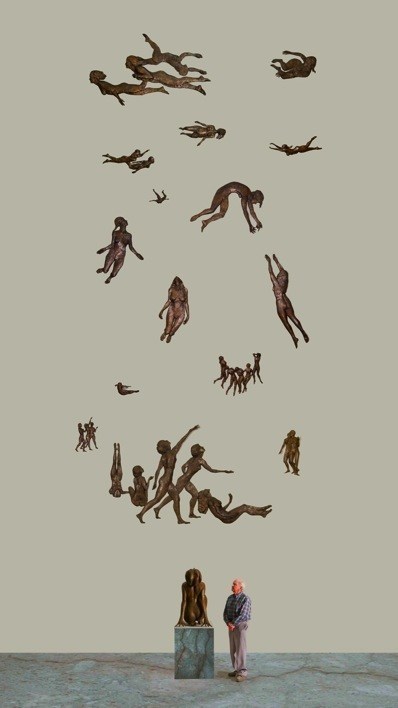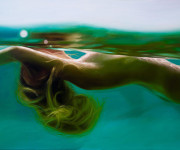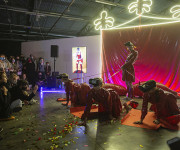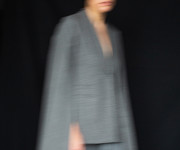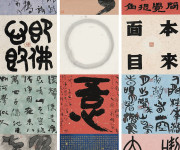As hearts fell on September 11, 2011, an adamant prayer for the redemption of the human spirit took flight in one artist’s studio, a desert harbour of art and inspiration near Sedona, Arizona.
On the day the Twin Towers collapsed, master sculptor John Henry Waddell (February 14, 1921 – November 27, 2019) had lived nearly a century of the human story. Holding a Doctorate in Fine Art, Waddell had worked and taught in Europe, Mexico and the U.S.
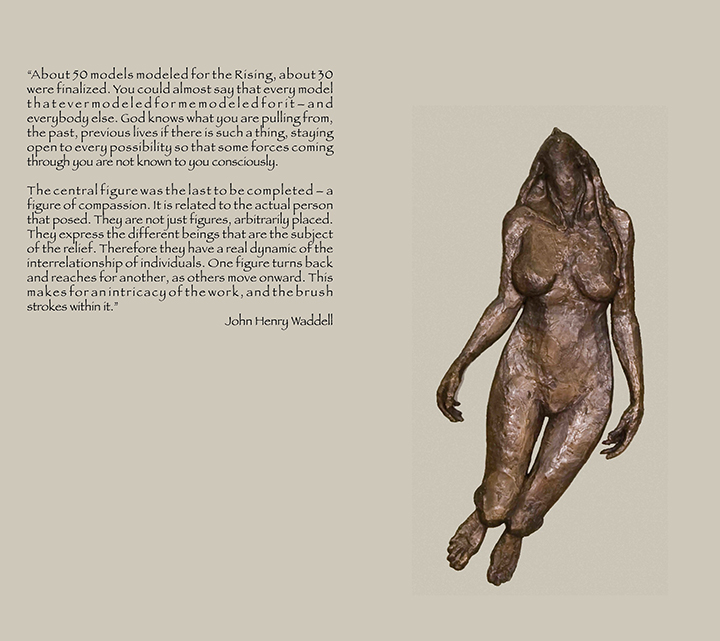
Detail of “RISING”, John Henry Waddell’s Elegy Tribute to those who lost their lives in 9/11. Photos – John Henry Waddell archive ©
Now, upon hearing the tragic news from across the country, the figures in the earthbound bas relief Waddell had been working on in his desert studio, took flight.
“…the figures in the relief started to rise.” Said Waddell “I thought, ‘They can fly. They will express a hope for a kind of release and freedom.'”
Other figures like warriors for peace, joined them as if lifted by the spirits of those who’d lost their lives on that day.
Over the decade it took for Waddell to sculpt this elegy, “Rising” grew to be a 30 figure, 50-foot-high bas relief.
“Rising” is Waddell’s stubborn attempt to counterbalance that heartbreakingly dreadful site of bodies falling with his lifelong belief in our ability as humans to rise above adversity, to reach out to one another, to embrace our differences and celebrate life.
It wasn’t the first time tragedy had brought voice to Waddell’s humanitarian artworks. Over decades, Waddell tackled the social ills of society; intolerance, fear, injustice – in search of higher meaning – in hopes of sparking a dialogue of hope among onlookers. His well-known grouping “That Which Might Have Been, Birmingham 1963” is his tribute to the four little girls whose lives were taken in the 1963 Ku Klux Klan bombing of the 16th Street Baptist Church in Birmingham, Alabama. Depicted symbolically as they might have grown to womanly maturity: four distinct individuals become a clear statement that “Black Lives Matter”.
In the documentary “The Reluctant Muse”, Waddell admits it’s not easy to define exactly what role art plays in modern society. “It is not anything that is material support of life; it’s not saving a life, it’s not feeding life, it’s a thought process and to be allowed to do it is very rare.”
But if we care to listen, art speaks.
Art reminds us that there are always great acts of compassion and incredible feats of courage, humanity and forward-thinking shaping this country. Art springs from the totality of human experience; the good, the bad and the ugly.
Art holds keys to healing, to overcoming adversity and to our advancement as a culture.
Twenty years have passed since September 11, 2001. John Henry Waddell is gone from this life, but from his studio, that desert harbour of art and inspiration, the figures in his last great work, “Rising”, send a fervent prayer into the vast Arizona sky: “Rise above adversity. There is something higher than this, and we must never stop reaching for it.”

